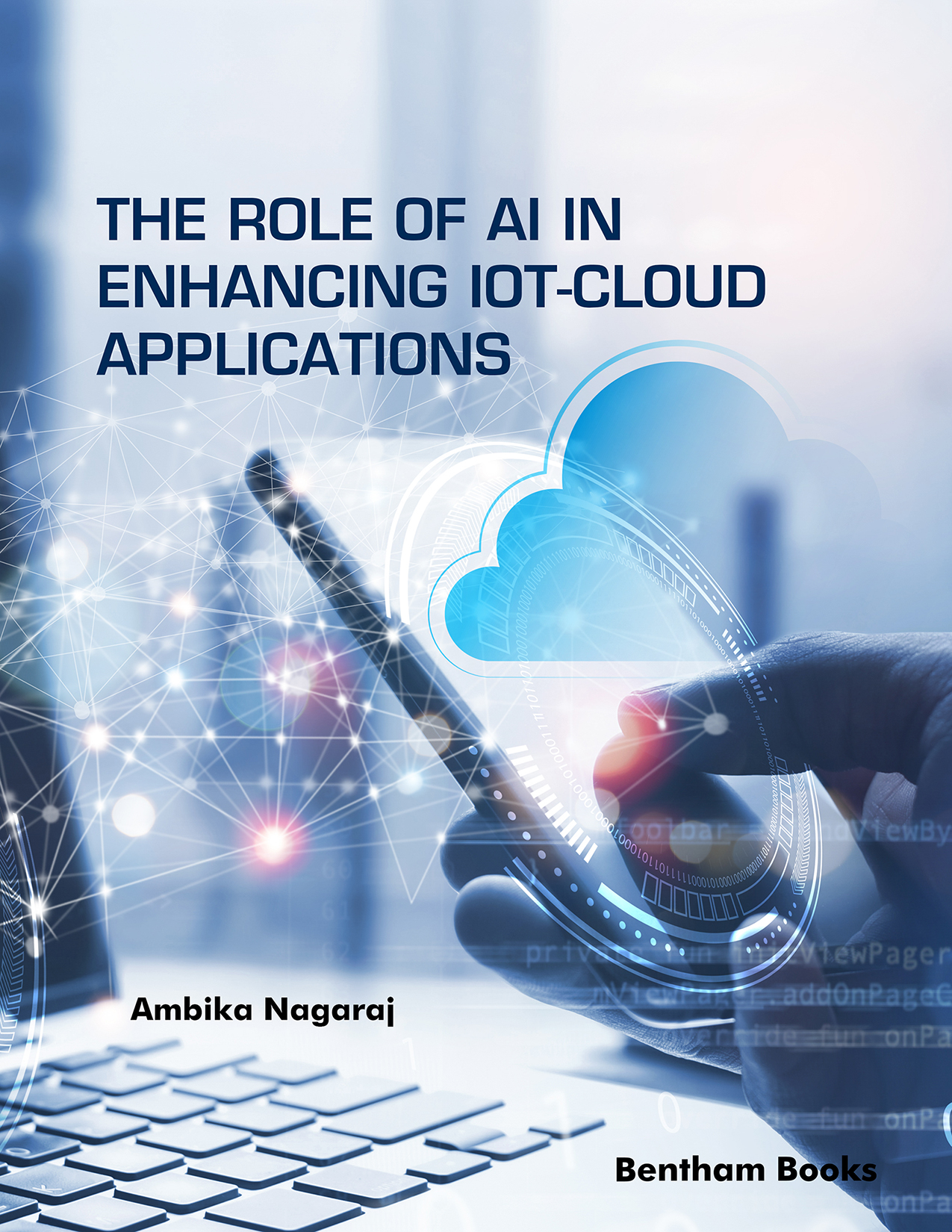The book focuses on the interesting aspects of the role of Artificial Intelligence in Enhancing Internet of Things-based Cloud Applications. The reader is expected to have some basic knowledge of these three Technical Areas in Computer applications, such as how the sensors sense, connect and convert analog data to the digital formats captured from the physical world data around the human being and the machinery, also, how they interface with Single Board Computers, Micro-controllers, and similar Programmable logic Controllers. The knowledge of the WSN and present state-of-the-art concepts can bring better-added advantages for the readers to understand the contents of this book. The primary knowledge of AI in the broader sense as Machine Learning, Statistical Methodologies, Vision Computing for the feature extraction from images and videos, Text, and Natural Language Processing will be a pre-requisite to a better and easy understanding of the work presented in this book.
The first chapter of the book discusses Expert Systems, NLP, speech recognition and machine vision. AI has well-proven and established methods in soft computing, such as Artificial Neural networks and fuzzy logic, for handling the vagueness, imprecise and ambiguous nature of the data. In addition, the Evolutionary Computing algorithms for optimization provide satisfactory solutions in some cases. The introductory chapter also brings material on the issues and challenges in AI.
The IoT comes with the background of Wireless Sensor Networks, Smart Motes, Dusts, and Unmanned Aerial Vehicles. The Internet of Things, combined with the Industrial setups having SCADA systems, Machine to Machines and Cyber-Physical Systems, bring monitoring and predictions of certain important aspects in the picture for the investigation. IoT brings the opportunity to combine the data from several applications from the Industry, Health, Smart-City, Smart Manufacturing, and ready Digital Twins as Proofs-of-Concept. The huge data that may be characterized by the Bigdata philosophy generated from various sources cannot be converted into useful insights unless the algorithm from Artificial Intelligence is utilized. To amalgamate these technologies, it is important to understand the architecture, applications, and use cases in IoT and AI. Chapter 2 provides the discourse on it.
Cloud-based services and products are an indispensable part of most Manufacturing Industries. The Cloud provides a flexible approach to the users, perhaps to the developers who want to launch microservice-based applications so that the continuous deployment and integration cycles persist. The managed, unmanaged, and Cloud bursts add meticulous flexibility to the Manufacturing Cloud. The Machine Learning, Computer Vision based APIs are accessible from the many established Clouds Services on an on-demand basis. The author has excellently discussed this aspect in Chapter 3.
The Final chapter discusses the approach to integrating the IoT, Cloud, and AI-based services for effective optimization of resource utilization. There are some interesting protocols at the application layer of the IoT, such as MQTT, COAP, and XMPP. The data pushed from the edge is stored in the Cloud through the Telemetry based MQTT in popular Cloud services. After the data is stored in the Cloud, the Machine Learning Methodologies are applied to the text data, image, video, or mixed datasets.
The extensive Research, Innovation, and Academic background of Author Dr. Ambika have made the content of the books interesting for the readers, and the learning for the readers as easy as possible with the necessary knowledge transfer process. Wish you a happy and joyous reading of the book.
Manoj Devare
Amity Institute of Information Technology
Amity University Maharashtra, India
FOREWORD II
The web of things is a relationship of different gadgets connected with the web, and they can collect and trade information with one another. These IoT gadgets make a great deal of information that should be assembled and looked for essential outcomes by utilizing made mental capacity to coordinate colossal information streams and breaking points of the IoT affiliation. The book subtleties the working of this mixed framework. It has four sections. Chapter 1 deals with Preamble to Man-made Awareness. Chapter 2 inspects the blend of two advances, their plan, applications, and use cases. Troubles and future degrees are fundamental for the readings. Chapter 3 examines the advancement's establishment, applications, use cases, hardships, and future augmentation. Chapter 4 briefs on the system's characteristics, applications, challenges, use cases, and inevitable destiny of the design.
Mansaf Alam
Journal of Applied Information Science & DietY, Govt. of India
Department of Computer Science
Jamia Millia Islamia, New Delhi, India
FOREWORD III
The present Machine Learning (ML) is in a mix with the Internet of Things (IoTs)-based cloud applications which assume a critical part in our daily existence. All such associated (intelligent) gadgets produce massive amounts of information that should be inspected and dissected to guarantee that they ceaselessly gain accessible informational indexes and better themselves with no manual impedance. Various ML approaches and strategies that are acquainted in a brief time frame effectively assess enormous information estimations, expanding the IoT's efficiency. It would be hard for intelligent gadgets to progressively pursue smart choices without counting and authorizing ML. The IoT assists with interconnecting different equipment gadgets, such as houses, vehicles,
etc., and different gadgets coordinated with actuators and sensors, so information can be gathered and shared. As different associations comprehend the ever-evolving capacity of the IoT, they have started finding different blocks they need to beneficially convey to utilize it. Various associations and organizations use ML to take advantage of the IoT's inert limit. The book introduces 4 chapters that discuss many interesting and intelligent ideas that show how artificial Intelligence helps to tackle situations in the manufacturing and operational ecosystem and machine learning solicitation for IoT and Cloud applications.
Jyotir Moy Chatterjee
Department of Information Technology
Lord Buddha Education Foundation
Kathmandu, Nepal-44600

